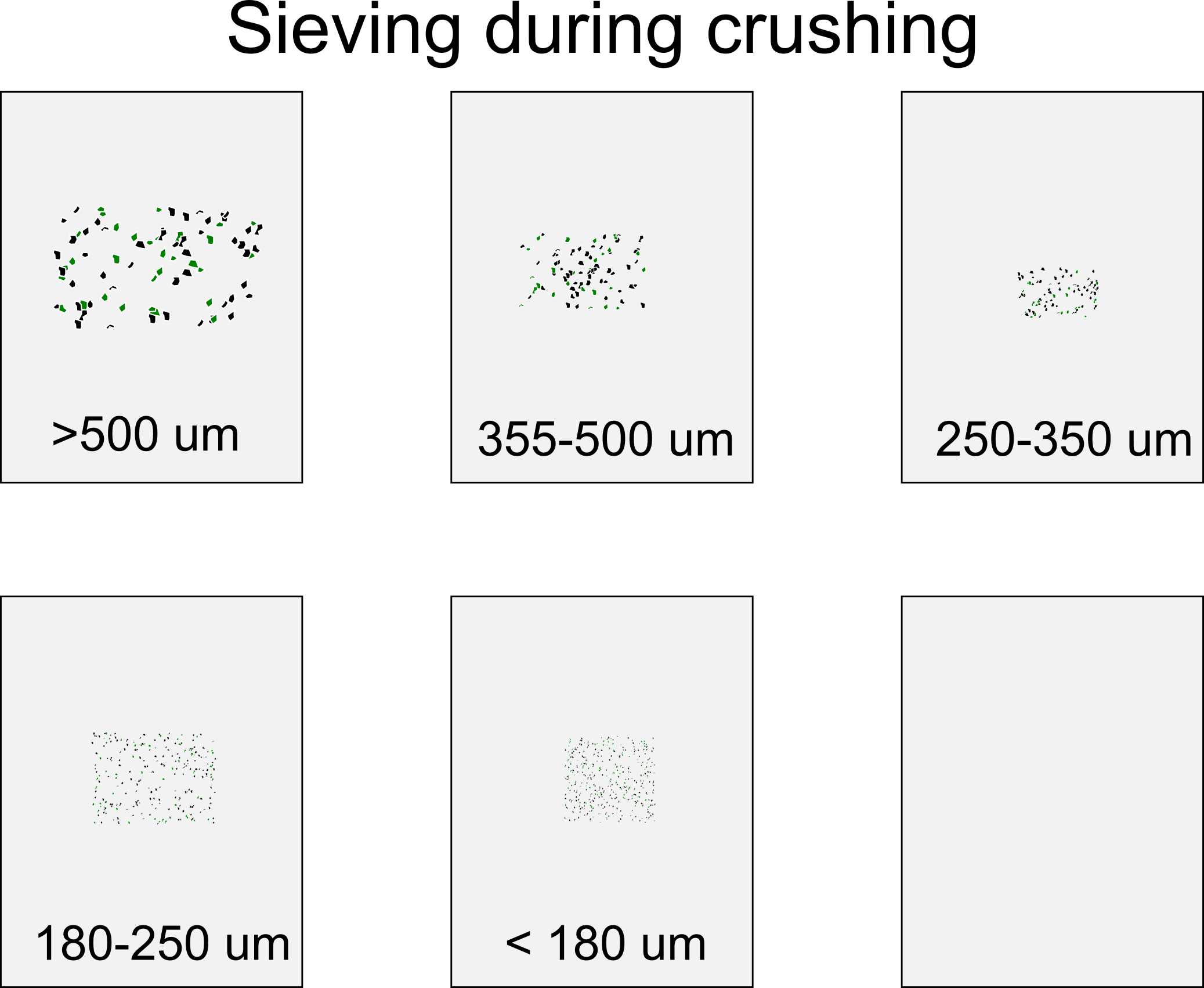Sieving samples after crushing¶
Steps
Setting up your work area for sieving¶
Gather appropriate sieves.
Check sieves for stuck grains and clean if necessary.
Layout a piece of paper for each sieve you will be using, plus an additional for sample transfer.
Label each piece of paper with the corresponding sieve size.

Check Sieves
In general, always check a sieve before using it to ensure that there is no cross contamination.
Procedure
Wipe down top and bottom of sieve with a tech wipe and ethanol.
Check for grains stuck by looking through the sieve. This is done best by using a bright background (e.g. hold up to light) in order to see grains clogging the mesh.
If there are grains, refer to cleaning methods in sieve_clean.
Sieving Method¶
Sieving is conducted by using all metal sieves for a given range of grain sizes.
Steps
Set out a piece of paper for each sieve plus the pan and label them with the sieve range and sample ID. These will be used to pour the contents of each sieve as the sample is separated.
Gather available sieves from 150 µm to 350 µm in at least 100 µm increments. Using larger increments will make it more difficult during the picking stage. It is best to have a uniform grain size distribution.
Check sieves for errant grains within the mesh and remove. Proceed with caution as applying pressure on the mesh when removing grains. Too much pressure can warp and damage the sieve, reducing it’s lifetime.
Wipe each sieve with ethanol or acetone. This helps remove fine particles that may contaminate samples.
Stack the sieves along with the bottom pan and pour in enough sample to make a few layers of grains. Filling sieves with too much material will slow down how quickly you can reliably sieve the sample.
Shake the sieves and once the sample appears to have been sieved remove the top sieve and dump out it’s contents onto the labeled paper. Continue to shake the sieve while occasionally tapping the sieves on the table, encouraging the finer material to fall through the sieve.
After working yourself through the first round, repeat the steps by re-stacking the sieves and pouring more sample in until the sample is complete.
Progression Sieving and Crushing¶
Sieving and crushing a sample in conjunction with one another allows you to efficiently breakdown the sample. Once the sample has been initially crushed to ~<5 mm in size, the sample should be sieved. The coarsest sieve should be taken and put back into the crusher. This can be repeated until the jaw crusher no longer becomes efficient in crushing the material.
Shaking Sieves¶
Stack the determined sieve sizes. It is best not to go over 4 sieves.
Pour sample into the top most sieve so that it covers roughly half of the sieve.
Begin gently shaking the sieve side to side. Occasionally gently tap the stack of sieves on a table to knock loosely held grains to the sieve below. Continue to shake until it appears that the finest material has left the topmost sieve.
Remove the topmost sieve and place it on the labeled sheet. Continue the shaking motion and continue this process until you have gone through each of the sieves.
Once you have gone through each of the sieves and emptied them on to their respective sheets, repeat the process until you have gone through the rest of the sample.
